foreword
Why learn Python? 10 Reasons to Choose to Learn Python

Python offers many useful features that make it more popular and easier to learn than other programming languages. It supports both object-oriented programming and procedural-oriented programming; we list some basic features below to explain the advantages of Python over other programming languages?
1. Easy to learn and use
Python is easier to learn compared to other programming languages. Its grammar is simple and very similar to English. Instead of using semicolons or curly braces, indentation is used to define code blocks, and code blocks can be understood more clearly. This is the first reason to recommend Python to beginners.
2. Python is a programming language with strong expressive ability
Python can perform complex tasks with just a few lines of code. For a simple example, you can just type
# 我的第一个 Python 程序
print("Hello World")
The hello world program. Execution takes only one line, as opposed to multiple lines in Java or C:
C language
#include <stdio.h>
int main()
{
/* 我的第一个 C 程序 */
printf("Hello, World! \n");
return 0;
}
Java language
public class HelloWorld {
public static void main(String[] args) {
/* 我的第一个 Java 程序 */
System.out.println("Hello World");
}
}
3. Python is an interpreted runtime language
Python is an interpreted language; this means that a Python program executes only one line at a time. The advantage of an interpreted language is that it makes debugging easy and portable. Of course, interpreting and running is a double-edged sword. While it is easy to debug, it also limits the running performance
4. Python is a cross-platform language
Python can run equally on different platforms like Windows, Linux, UNIX and Macintosh. Therefore, it can be said that Python is a portable language. It enables programmers to develop software for multiple platforms by writing a program only once.
5. Python is a free and open source programming language
Everyone can use Python for free. It is freely available on its official website www.python.org. It has a large community around the world dedicated to developing new python modules and features. Anyone can contribute to the Python community. Open source means that anyone can download its source code without paying a penny.

6. Python is an object-oriented programming language
Python supports an object-oriented language, and the concept of classes and objects came into being. It supports inheritance, polymorphism and encapsulation, etc. Object-oriented process helps programmers to write reusable code; and develop applications with less code.
7. Python is very scalable
Python is a glue language, which means that other languages (such as C/C++) can be used to compile code. We can introduce these codes in Python code. Modules with extremely high computing performance can use C/C++ to package Python modules, and then call them conveniently in Python.
8. Python has a rich extension library
Python's ecosystem offers a wide range of libraries for various fields such as machine learning, web developers, and scripting. There are various machine learning libraries and data analysis, data science libraries such as Tensorflow, Pandas, Numpy, Keras and Pytorch etc. Django, flask, pyramids are popular frameworks for Python web development.
9. GUI programming
Python makes it easy to develop graphical user interface (GUI) desktop applications. PyQT5, Tkinter, and PysimpleGui are libraries for developing web applications.
10. Dynamic typing
In Python, we don't need to specify the data type of the variable. When we assign some value to a variable, it will automatically allocate memory to the variable at runtime. Suppose we assigned integer value 15 to x, then we don't need to write int x = 15. Just write x = 15.

Self-study on Python
Finally, I will introduce a complete python learning route, from entry to advanced, including mind maps, classic books, and supporting videos, to help those who want to learn python and data analysis!
1. Introduction to Python
The following content is the basic knowledge necessary for all application directions of Python. If you want to do crawlers, data analysis or artificial intelligence, you must learn them first. Anything tall is built on primitive foundations. With a solid foundation, the road ahead will be more stable.
Include:
Computer Basics
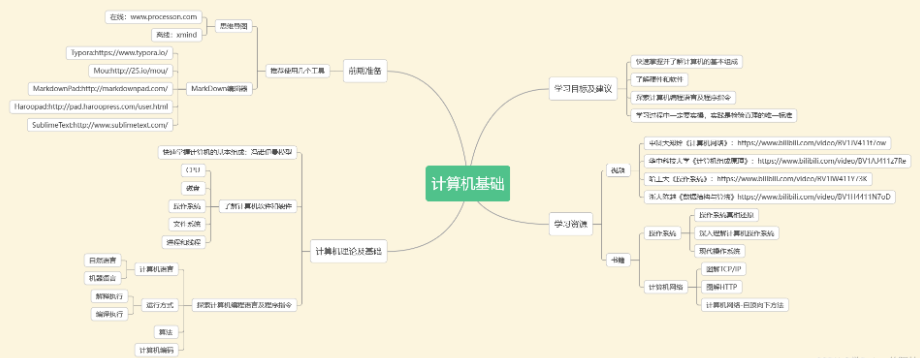
python basics
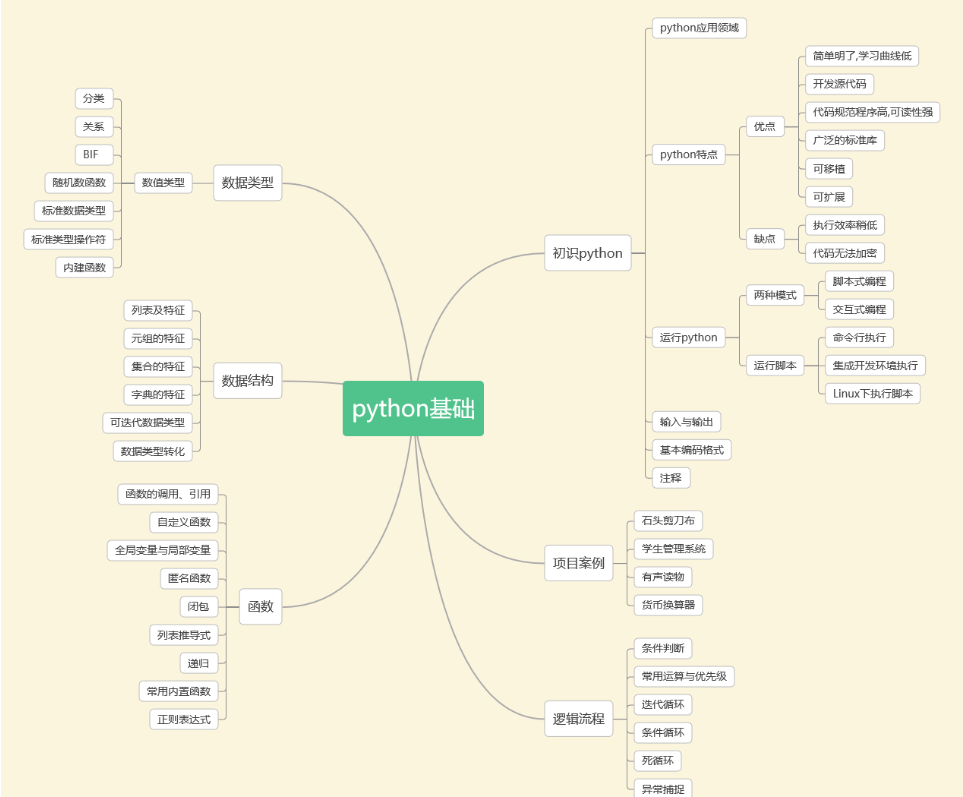
Python introductory video 600 episodes:
Watching zero-based learning videos is the quickest and most effective way to learn. Following the teacher's ideas in the video, it is easy to get started from the basics to the in-depth.

2. Python crawler
As a popular direction, reptiles are a good choice whether it is a part-time job or as an auxiliary skill to improve work efficiency.
Relevant content can be collected through crawler technology, analyzed and deleted to get the information we really need.
This information collection, analysis and integration work can be applied in a wide range of fields. Whether it is life services, travel, financial investment, product market demand of various manufacturing industries, etc., crawler technology can be used to obtain more accurate and effective information. use.
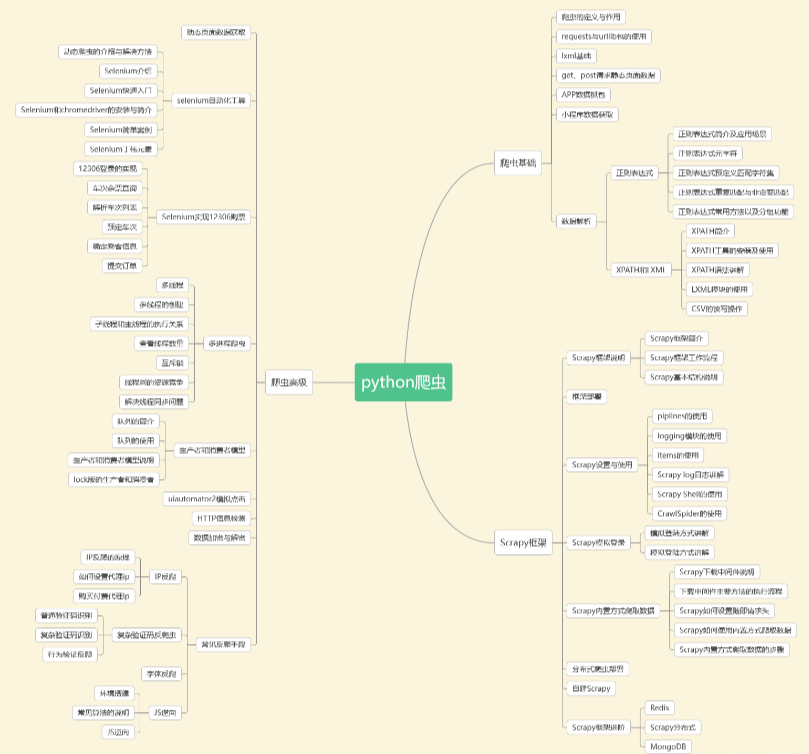
Python crawler video material
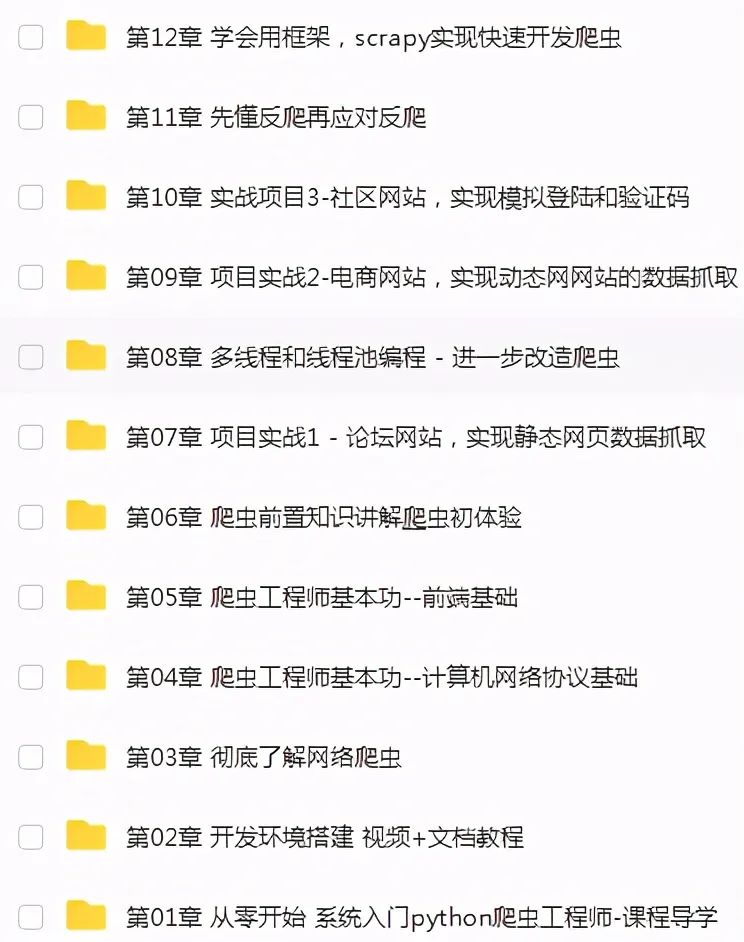
3. Data analysis
According to the report "Digital Transformation of China's Economy: Talents and Employment" released by the School of Economics and Management of Tsinghua University, the gap in data analysis talents is expected to reach 2.3 million in 2025.
With such a big talent gap, data analysis is like a vast blue ocean! A starting salary of 10K is really commonplace.

4. Database and ETL data warehouse
Enterprises need to regularly transfer cold data from the business database and store it in a warehouse dedicated to storing historical data. Each department can provide unified data services based on its own business characteristics. This warehouse is a data warehouse.
The traditional data warehouse integration processing architecture is ETL, using the capabilities of the ETL platform, E = extract data from the source database, L = clean the data (data that does not conform to the rules), transform (different dimension and different granularity of the table according to business needs) calculation of different business rules), T = load the processed tables to the data warehouse incrementally, in full, and at different times.
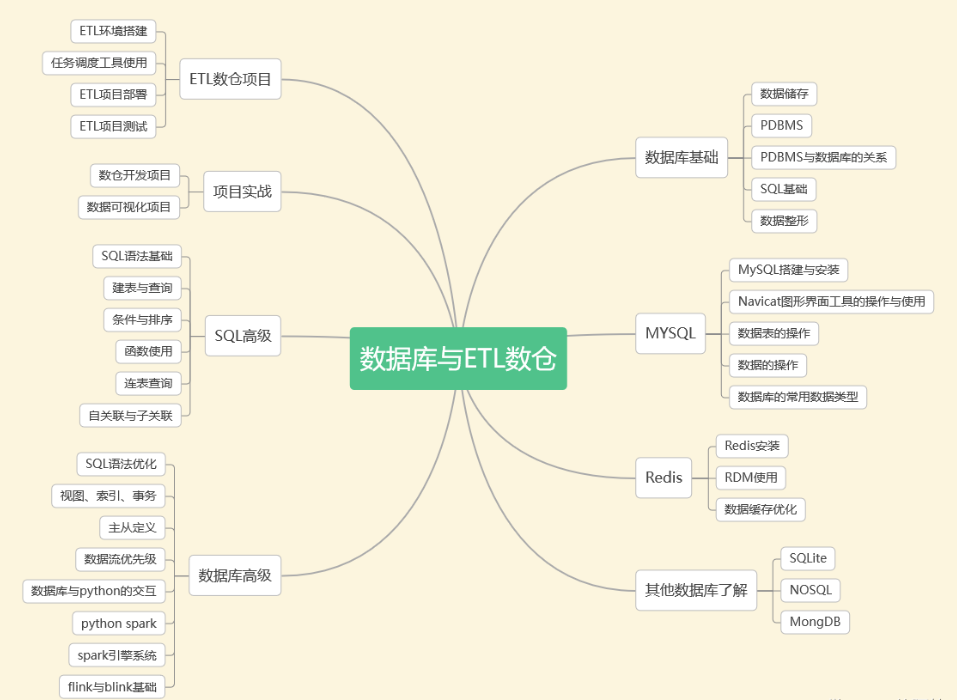
5. Machine Learning
Machine learning is to learn part of the computer data, and then predict and judge other data.
At its core, machine learning is "using algorithms to parse data, learn from it, and then make decisions or predictions about new data." That is to say, a computer uses the obtained data to obtain a certain model, and then uses this model to make predictions. This process is somewhat similar to the human learning process. For example, people can predict new problems after obtaining certain experience.
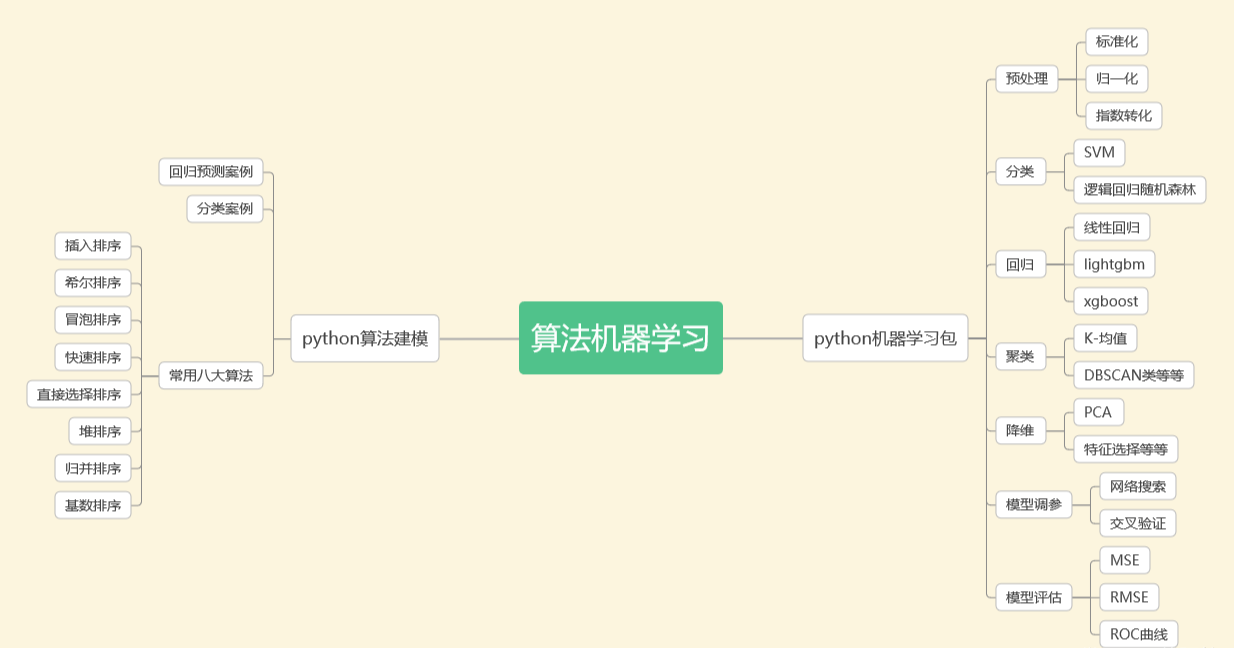
Machine Learning Materials:
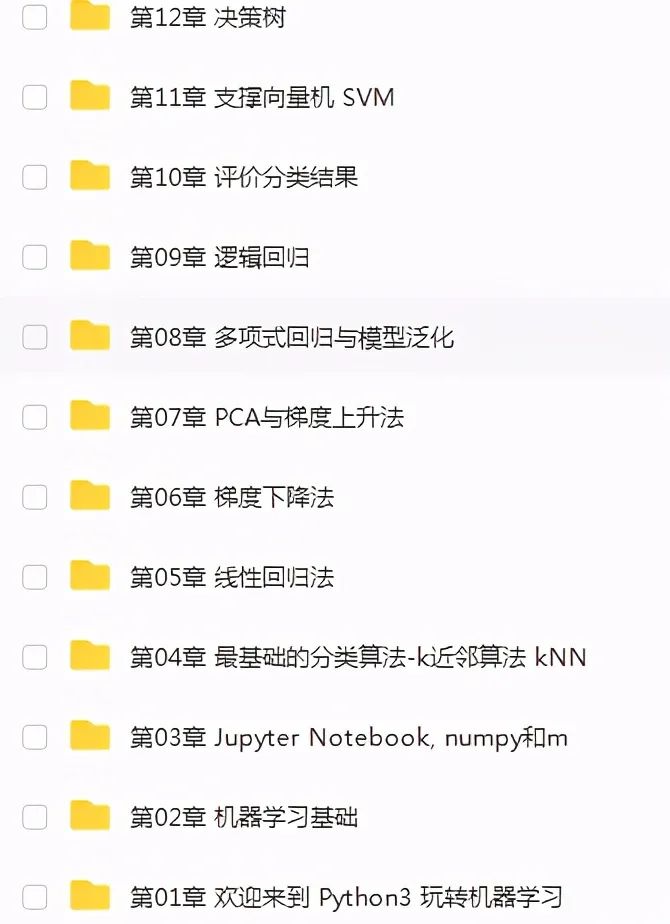
6. Advanced Python
From basic grammatical content, to a lot of in-depth advanced knowledge points, to understand programming language design, after learning here, you basically understand all the knowledge points from python entry to advanced.
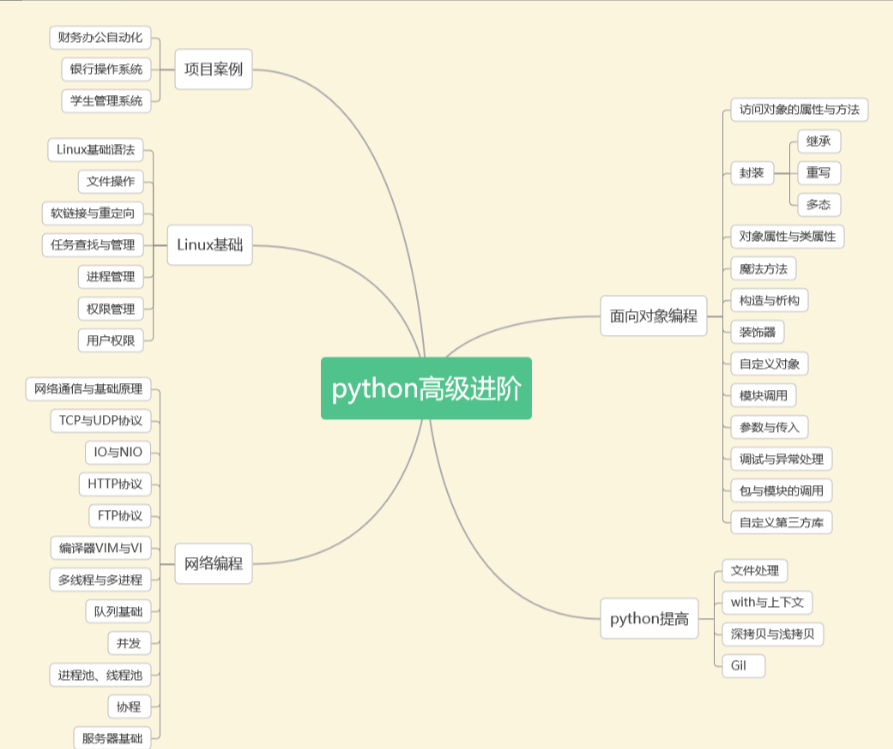
At this point, you can basically meet the employment requirements of the company. If you still don’t know where to find interview materials and resume templates, I have also compiled a copy for you. It can really be said to be a systematic learning route for nanny and .
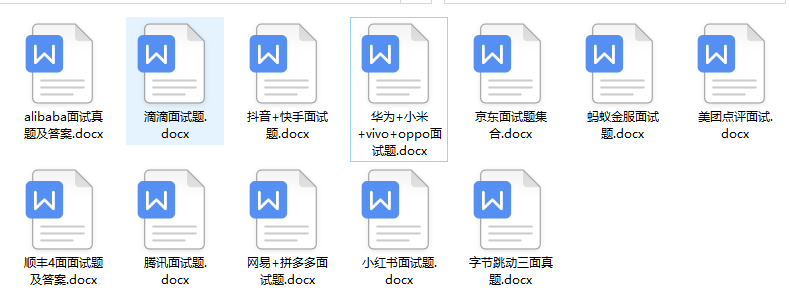
But learning programming is not achieved overnight, but requires long-term persistence and training. In organizing this learning route, I hope to make progress together with everyone, and I can review some technical points myself. Whether you are a novice in programming or an experienced programmer who needs to be advanced, I believe that everyone can gain something from it.
It can be achieved overnight, but requires long-term persistence and training. In organizing this learning route, I hope to make progress together with everyone, and I can review some technical points myself. Whether you are a novice in programming or an experienced programmer who needs to be advanced, I believe that everyone can gain something from it.
Data collection
This full version of the full set of Python learning materials has been uploaded to the official CSDN. If you need it, you can click the CSDN official certification WeChat card below to get it for free ↓↓↓ [Guaranteed 100% free]

Good article recommended
Understand the prospect of python: https://blog.csdn.net/SpringJavaMyBatis/article/details/127194835
Learn about python's part-time sideline: https://blog.csdn.net/SpringJavaMyBatis/article/details/127196603
